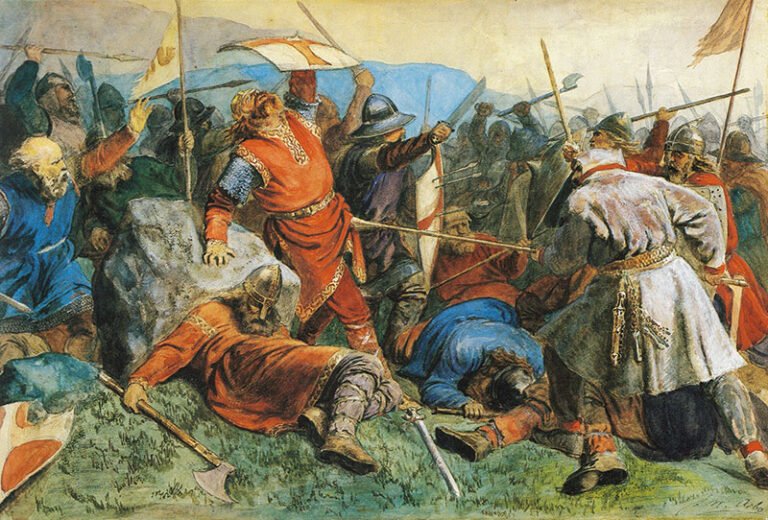
Controversy surrounds one of Norway's most famous ever battles. We may never know what really happened at the Battle of Stiklestad.
The Battle of Stiklestad is one of the key events in the history of Norway. It is said to have taken place in July 1030 in central Norway and saw the defeat of the Christian Viking King, Olav Haraldsson.
He would go on to become the patron saint of Norway and today the battle is considered a critical step in the consolidation of Norway and the breakthrough of Christianity. But many historians doubt the stories.
Who was Olav Haraldsson?
The reason behind the doubt is that much of what we know about Olav is based on the Norse sagas.
These word-of-mouth stories were not put down on paper until many years after their creation, so many people doubt their validity, especially on specifics. With that in mind, here's what is ‘known' about Saint Olav.
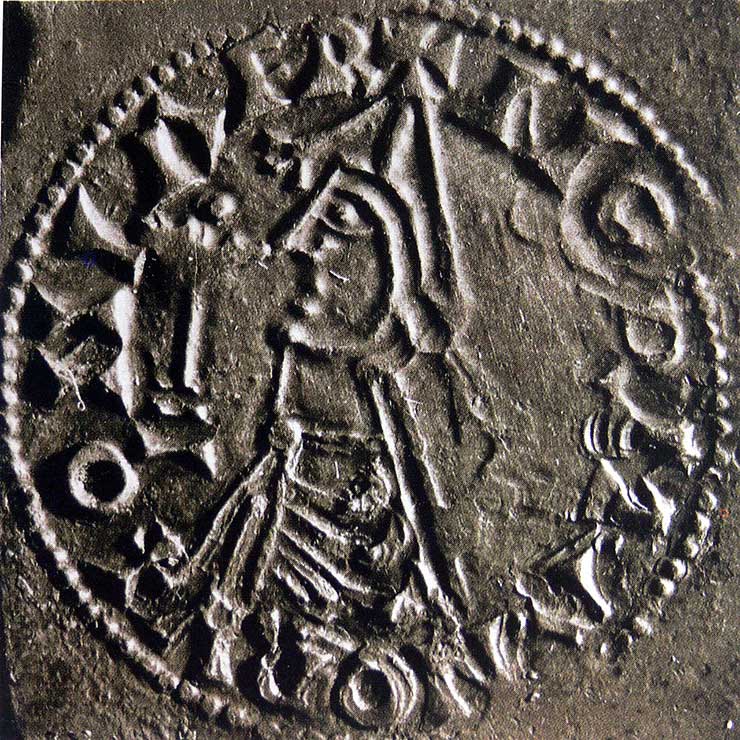
The first effective king of all Norway, Olav Haraldsson (995-1030) achieved a 12-year respite from Danish domination and extensively increased the acceptance of Christianity in the country.
His religious code of 1024 is considered to represent Norway’s first national legislation. In the year following his death he was made a saint and his popularity spread throughout much of northern and western Europe.
Churches and shrines were built in his honour in England, Sweden, and Italy, and he was the last western saint to be accepted by the Eastern Orthodox church. He is the Patron Saint of Norway and is known in Norwegian as Olav den hellige, which translates to Olav the Holy.
Just don't get him mixed up with the other Olav, the founder of Trondheim, Olav Tryggvason!
The story of the battle
According to sources from sagas (more of their authenticity later!), Olav travelled with an army of 3,600 through Sweden to the farm at Stiklestad.
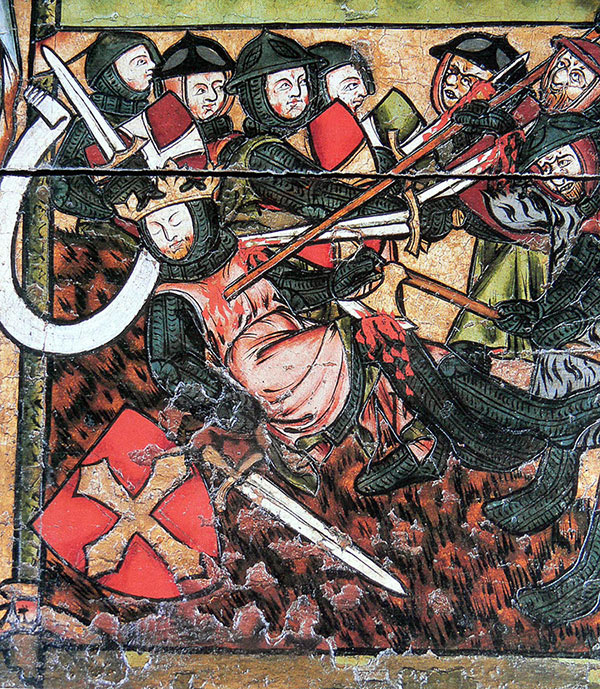
Here, he met an army of more than 10,000 peasants and farmers led by Hárek of Tjøtta, Thorir Hund from Bjarkøy and Kálfr Árnason, a man who had previously served Olav.
Olav is said to have suffered severe wounds to the knee, knech, and stomach, the latter of which killed him. Earlier sources do not specify the specific people who dealt the blows.
A later saga claims Thorir Hund was the man behind the killer blow, using the spear that had previously killed his nephew. The king's body was carried away and secretly buried in Trondheim.
The question of authenticity
Some sources say the king was not defeated in battle, but murdered by his own people. So says the Anglo Saxon Chronicle (1030), while Adam of Bremen (1070) and Florence of Worcester (1100) say that the King was ambushed and killed.
Listen: Researching the Viking Age
Critics say that it's the canonisation of Olav that led to the story developing into a courageous battle for Christianity, as a saint could surely not have died in other circumstances.
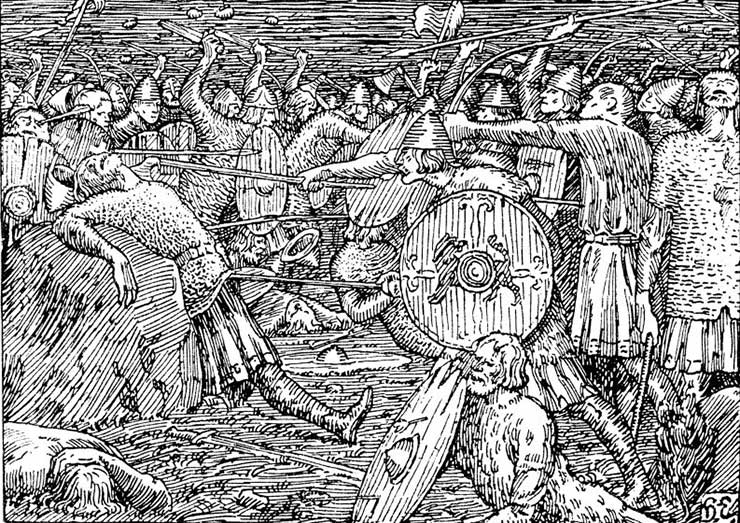
One of the best known written descriptions of the battle was by the Icelandic historian and poet Snorri Sturluson. His saga Heimskringla depicts an epic battle, but how much of this was artistic license is hotly debated.
The battle's legacy
Although it was a gradual process, the Battle of Stiklestad represents the introduction of Christianity to Norway.
The occasion is marked every July with Norway's oldest and largest open-air theatre at Stiklestad. The St. Olav Drama is the most famous, depicting the events in the run-up to and immediately following the battle.
The play is performed during the Olsokdagene (St. Olav's Days) festival. To keep things fresh, the dramatisation of the events that occurred in the run-up to the battle is re-interpreted by a different laywrigt each year.
Olav Haraldsson is also remembered at the annual Olavsfestdagene (St. Olav's Festival) in and around Nidaros Cathedral in Trondheim.
Visiting Stiklestad
Primarily open during the summer months, Stiklestad National Culture Centre was established by Parliament in 1995 to preserve and promote the heritage of Saint Olav.
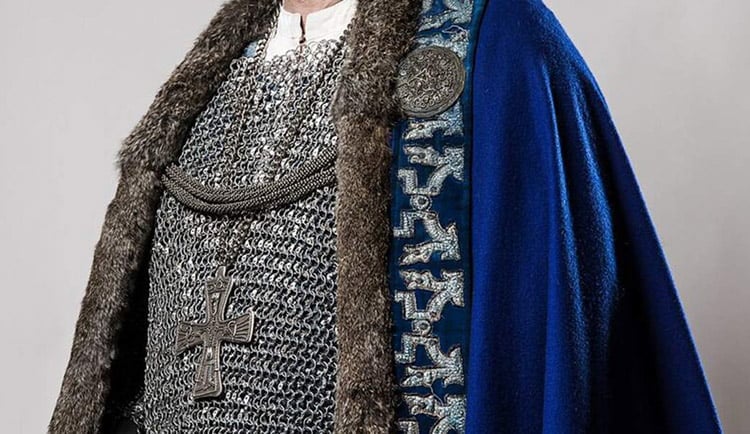
At the centre is the medieval farm Stiklastadir, which includes a reconstructed Viking longhouse and many activities such as crafts, farm work and children’s games.
There's exhibitions on the area's history at the Folk Museum, and guided tours for those who want to know even more. As mentioned earlier, the centre is also the setting for the annual Saint Olav Drama and festival.
Other attractions include the 12th-century stone church said to have been built over the site where Haraldsson was killed.
As visiting the centre is a bit of a mission, you'll be pleased to hear there is a modern on-site hotel (part of the Scandic chain) that offers around 50 rooms for guests.
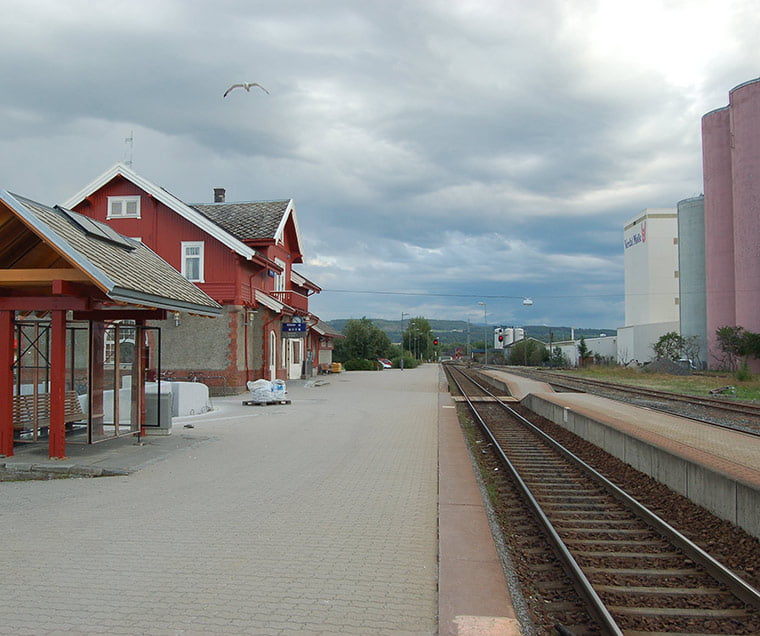
Stiklestad is located 100km north of Trondheim. A car is your best bet, although there is a railway station on the Trondheim to Steinkjer and Trondheim to Bodø lines at Verdal, approximately 4km away from the cultural centre.
The Stiklestad jubilee
Budget has been set aside by the government to mark the 1,000th anniversary of the Battle of Stiklestad in 2030.
Planning has already begun for what the powers that be deem an outstanding opportunity to improve knowledge and stimulate debate “about what Norway has been, what Norway is, and what Norway should be.”
Watch this space!
In the meantime, why not share this fascinating story of Norway's most famous battle on Pinterest? We've got just the pin for you:
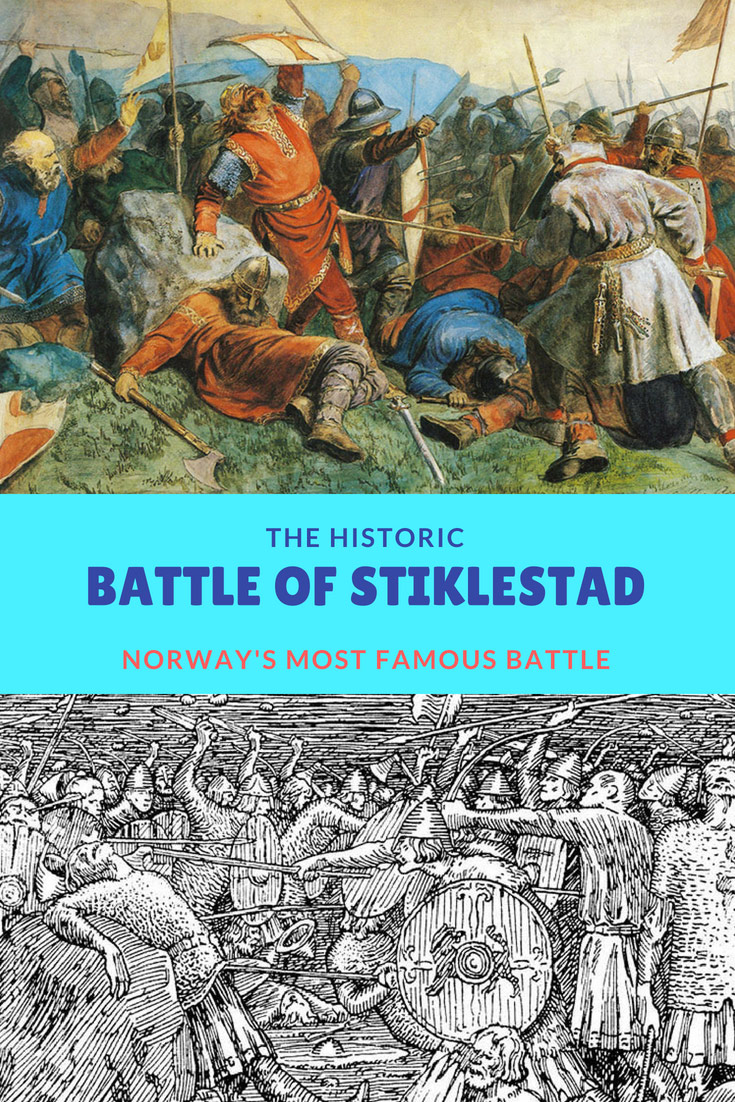


The mission which destroyed the shipment of heavy water bound for Germany at Lake Tinn was perhaps the single most important turning point in WWII. Had the Germans been able to develop an atomic bomb, they had the V weapons to deliver them. Britain would have been forced to surrender and the invasion of Europe never would have happened. Free to focus on the Eastern front, the Russians would have been defeated next. All of Europe would be speaking German. Arguably a nuclear armed Germany could have threatened the United States eventually. We only escaped that scenario because very brave and courageous Norwegians destroyed the heavy water thus stifling the German scientists working on the bomb. Certainly it is worth more than a few lines. Best Regards,
Fine, but this article is about the Battle of Stiklestad, almost 1,000 years before the Second World War.